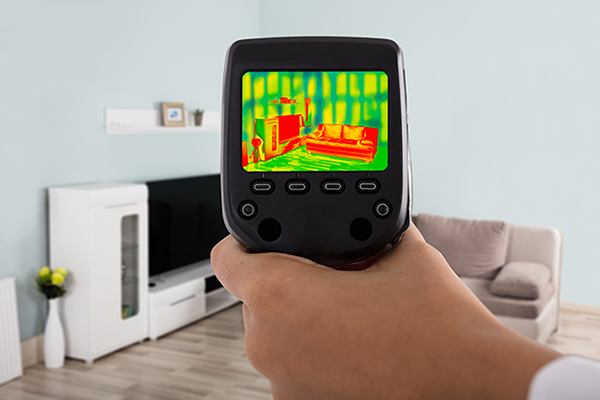 Water damage can have devastating effects on your home, leading to structural damage, mold growth, and a host of other issues. When it comes to water damage restoration, one crucial factor that often goes unnoticed is moisture detection. Detecting and properly addressing hidden moisture is essential for effective restoration and preventing future problems. In this blog post, we will explore the role of moisture detection in the water damage restoration process.
Water damage can have devastating effects on your home, leading to structural damage, mold growth, and a host of other issues. When it comes to water damage restoration, one crucial factor that often goes unnoticed is moisture detection. Detecting and properly addressing hidden moisture is essential for effective restoration and preventing future problems. In this blog post, we will explore the role of moisture detection in the water damage restoration process.
Water can seep into various building materials, such as drywall, insulation, flooring, and even structural components. Sometimes, the extent of the water damage is not readily visible to the naked eye. This is where moisture detection tools and techniques come into play. Moisture meters, thermal cameras, and other specialized equipment can help professionals identify areas with hidden moisture, allowing for targeted restoration efforts.
One of the primary concerns after water damage is the potential for mold growth. Mold spores thrive in moist environments and can start growing within 24 to 48 hours. By detecting and eliminating hidden moisture, you can effectively prevent mold infestation. Moisture detection tools help identify areas with elevated moisture levels, even in hard-to-reach places, allowing restoration professionals to address the source of moisture before mold becomes a problem.
Moisture detection is essential for accurately assessing the extent of the water damage. By identifying moisture-prone areas, professionals can determine which materials and structures are affected and require restoration. This information helps in formulating a comprehensive restoration plan, ensuring that all impacted areas are properly addressed.
Moisture detection allows for targeted restoration efforts, focusing on the areas that require immediate attention. Instead of relying on guesswork, restoration professionals can use moisture meters to measure the moisture content of different materials. This helps them prioritize and concentrate their efforts on the areas with the highest moisture levels, maximizing the efficiency of the restoration process.
After water damage occurs, the affected areas need to be thoroughly dried to prevent further damage and mold growth. Moisture detection tools play a vital role in monitoring the drying process. Restoration professionals can regularly measure the moisture levels in the materials to ensure they are dying properly. Adjustments can be made as necessary, such as adjusting the airflow, introducing dehumidifiers, or employing specialized drying techniques to expedite the process.
Moisture detection is not only important during the restoration process but also for validating the success of the restoration efforts. After completing the restoration, moisture meters can be used to verify that the moisture levels in the affected materials are within acceptable ranges. This step ensures that all moisture has been effectively eliminated, reducing the risk of future issues such as mold growth or structural damage.
In conclusion, moisture detection plays a critical role in effective water damage restoration. By using specialized tools and techniques, restoration professionals can identify hidden moisture, assess the extent of the damage, prevent mold growth, target restoration efforts, monitor the drying process, and validate the success of the restoration. If you have experienced recent water damage, do not hesitate to call us at Restoration 1 of Des Moines. Through this comprehensive approach, we will help you achieve thorough and long-lasting restoration results, minimizing the risk of future problems and ensuring a safe and healthy living environment.